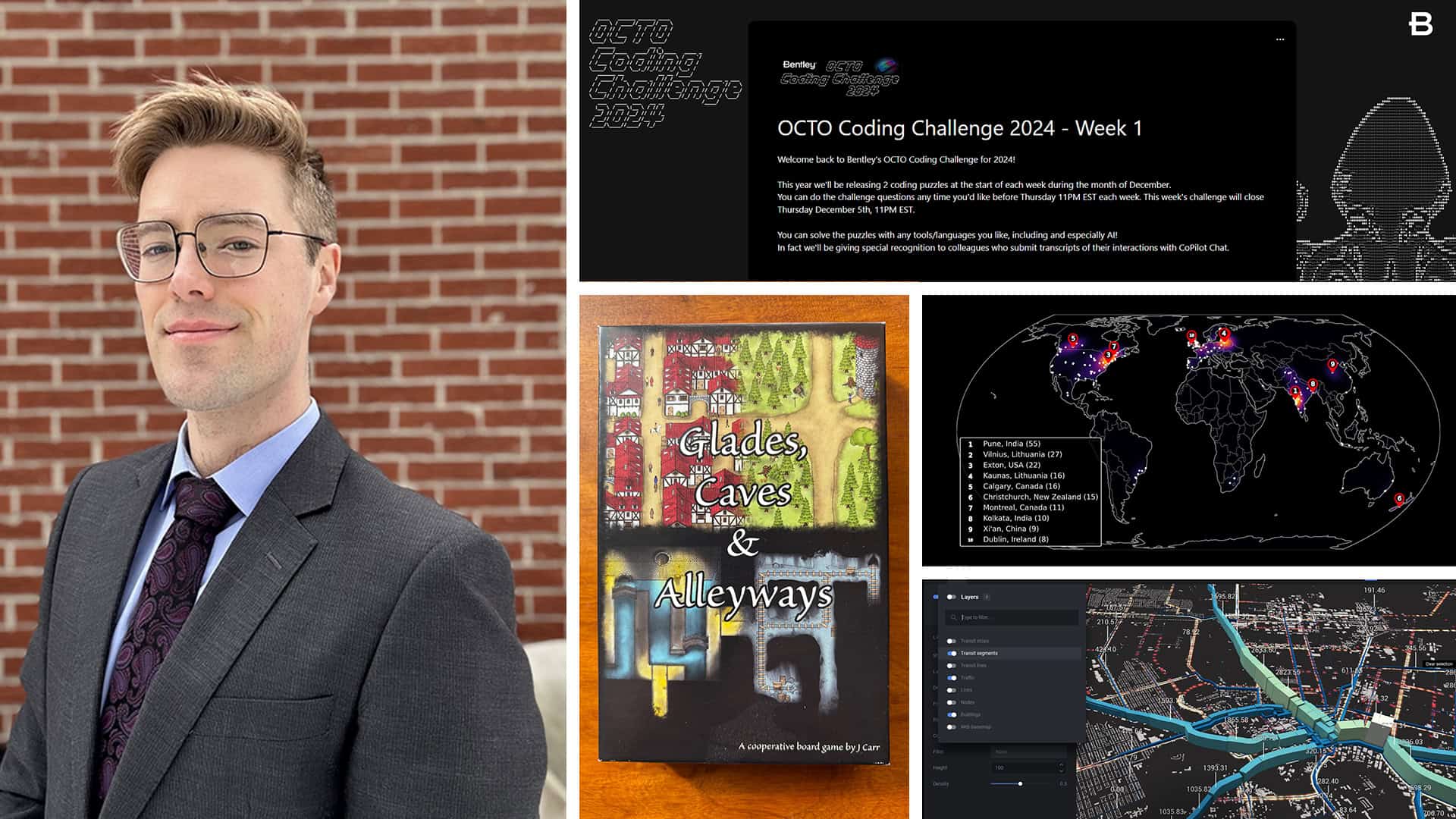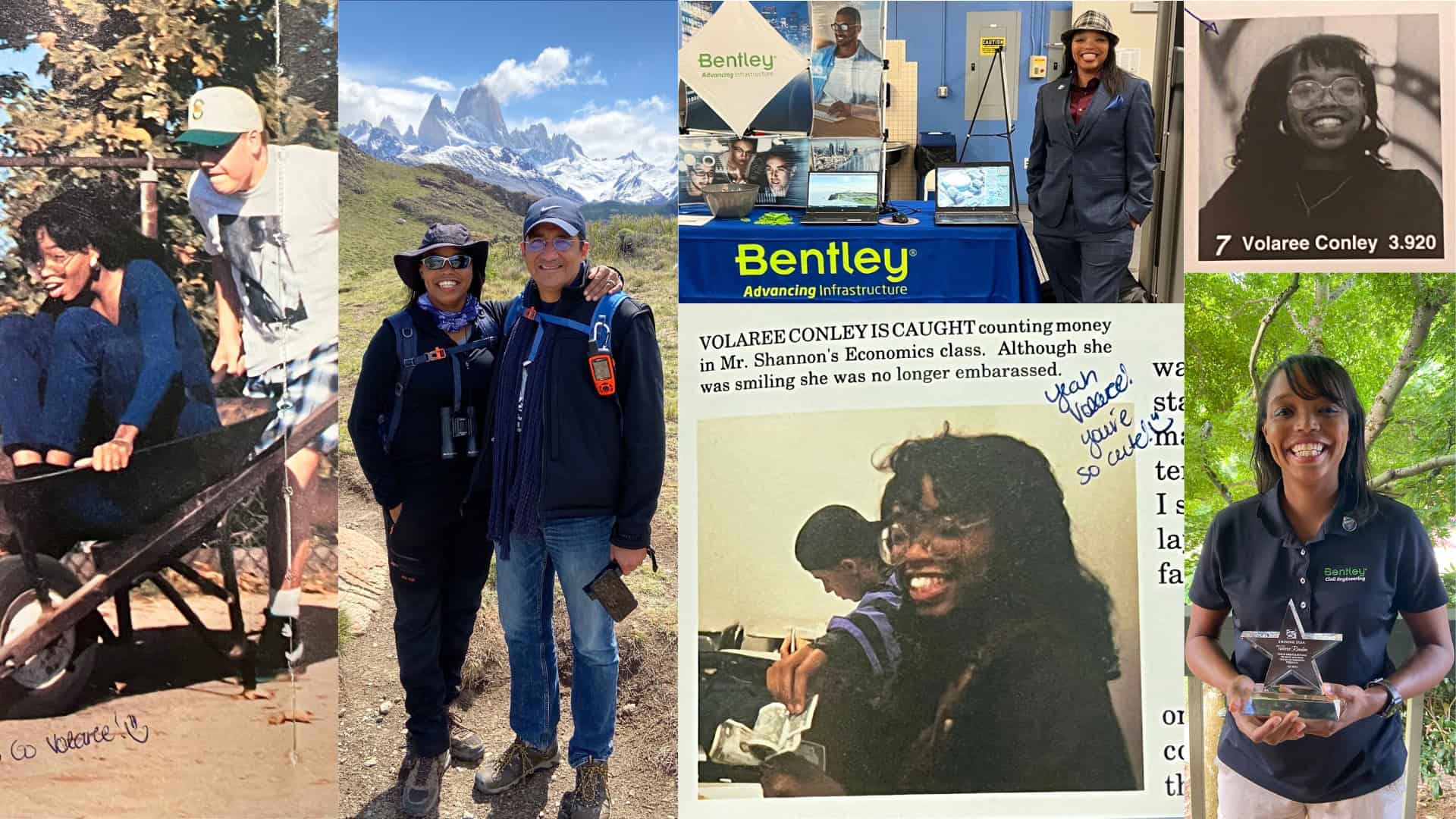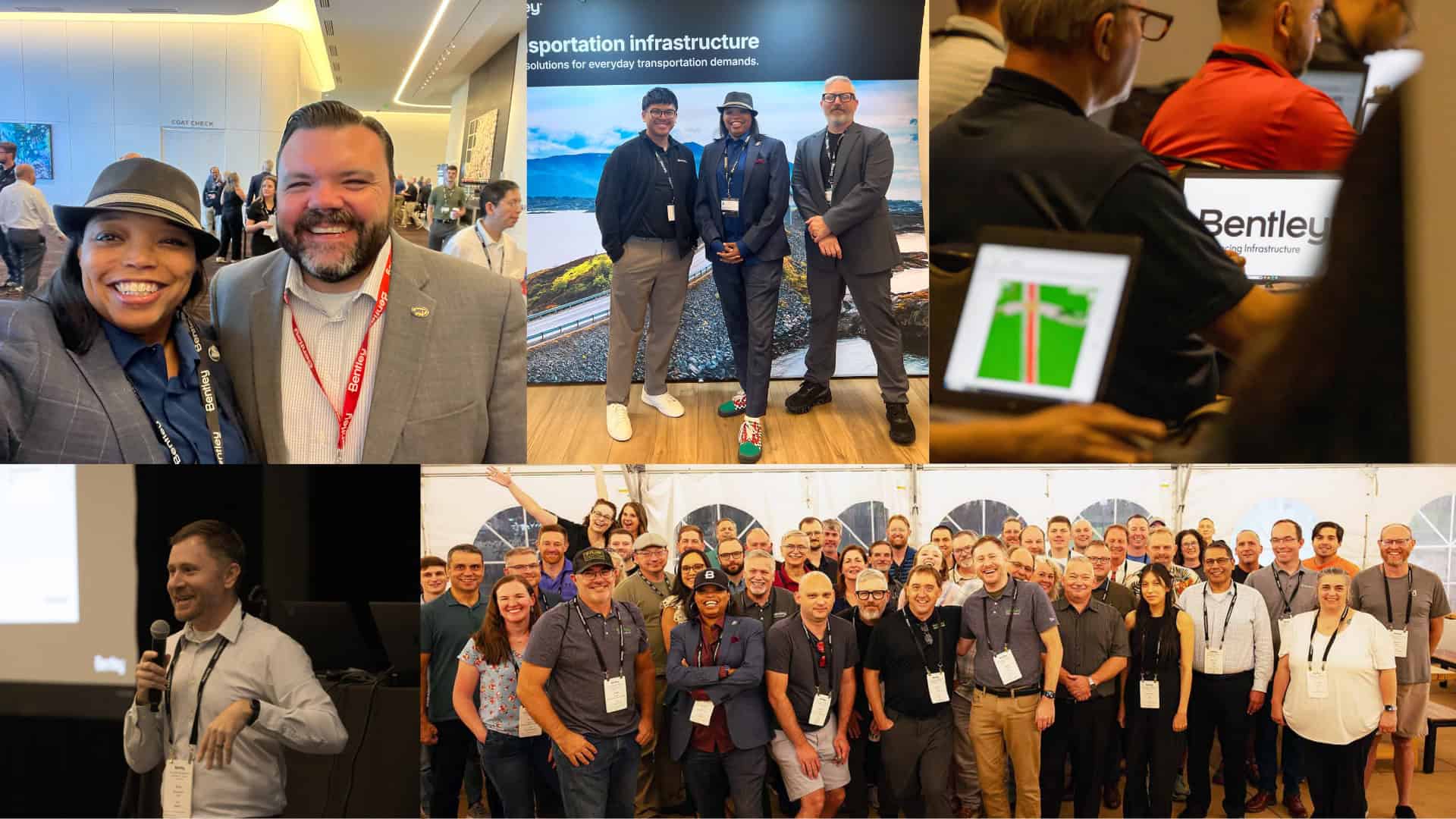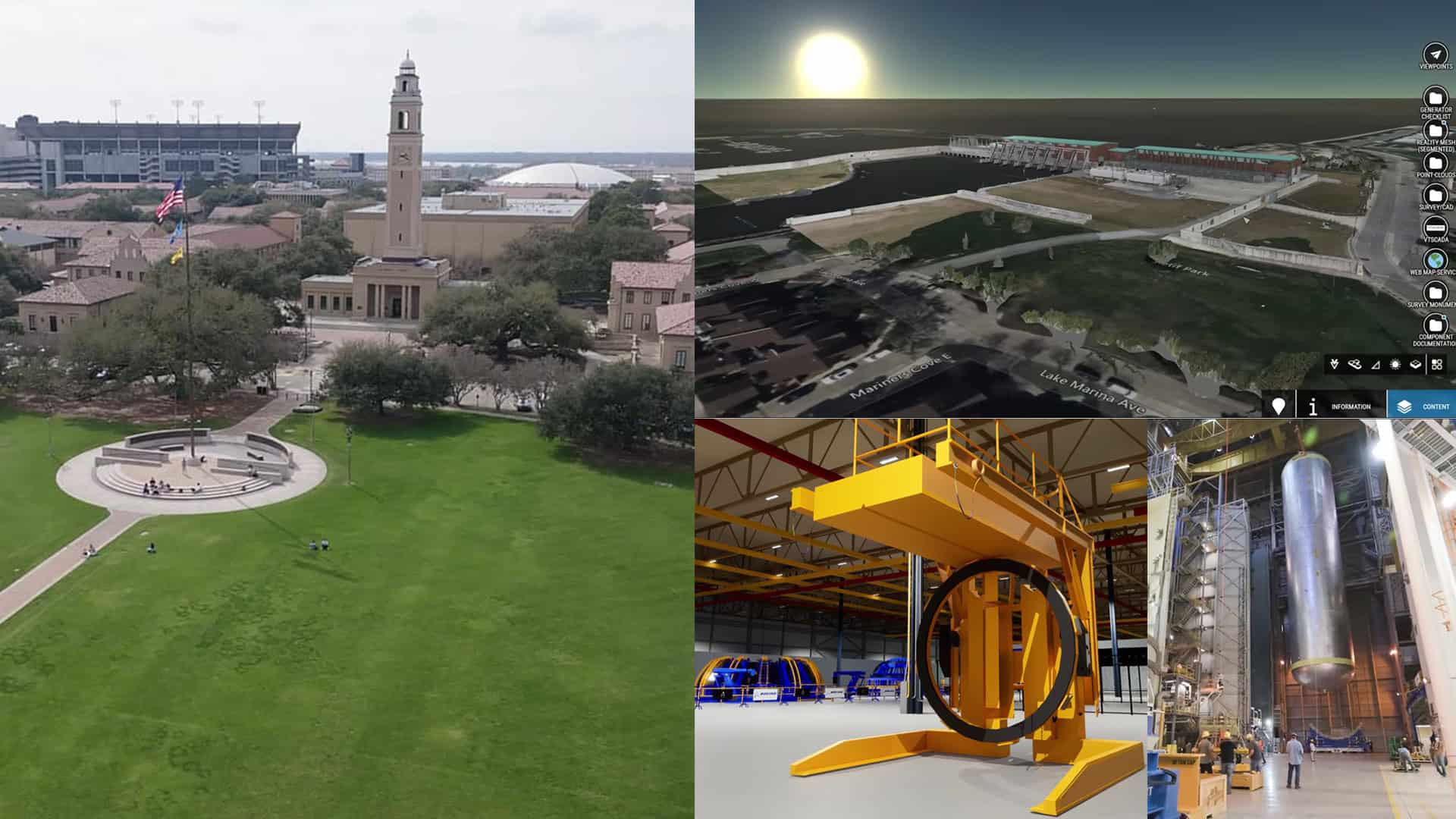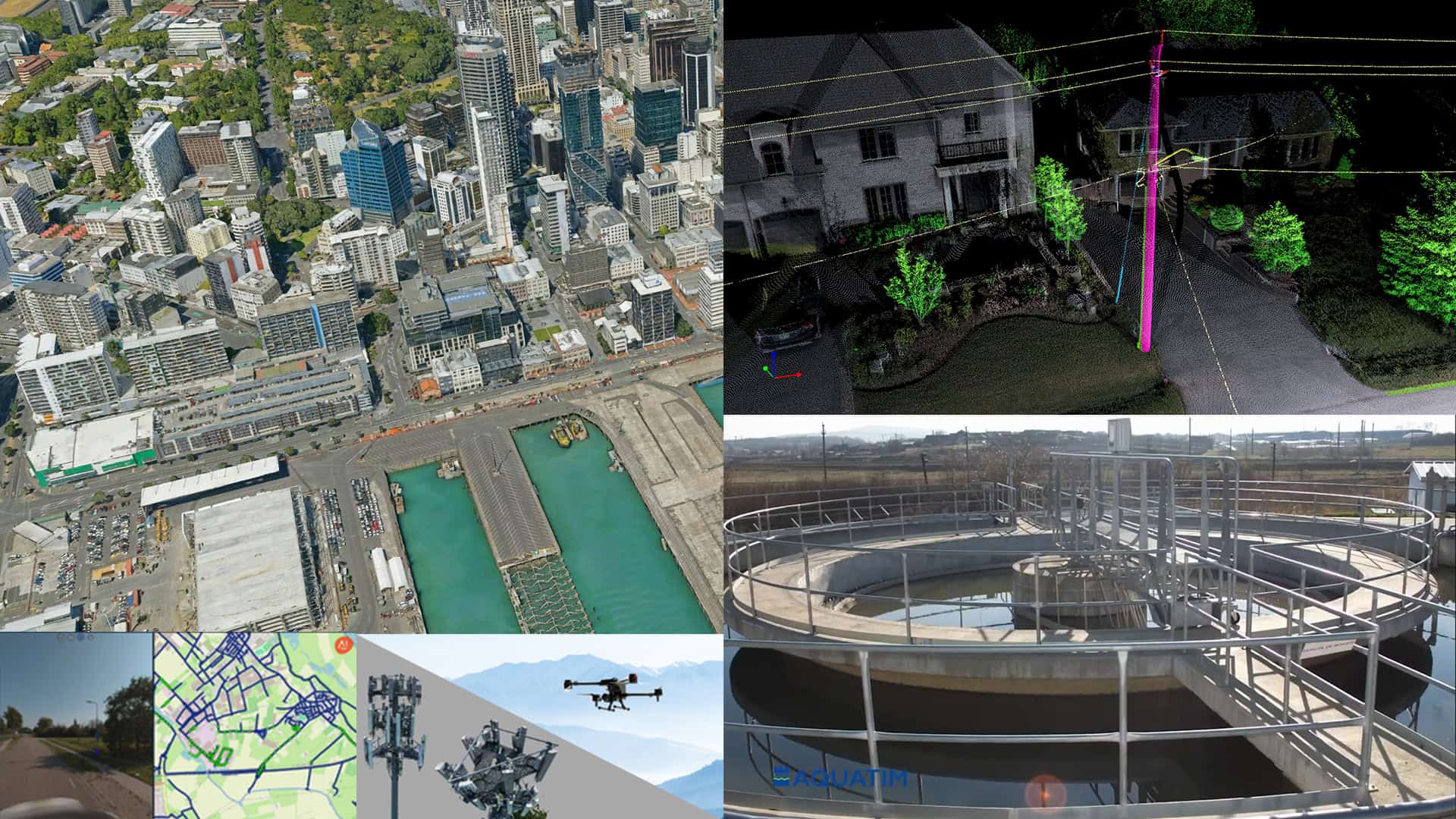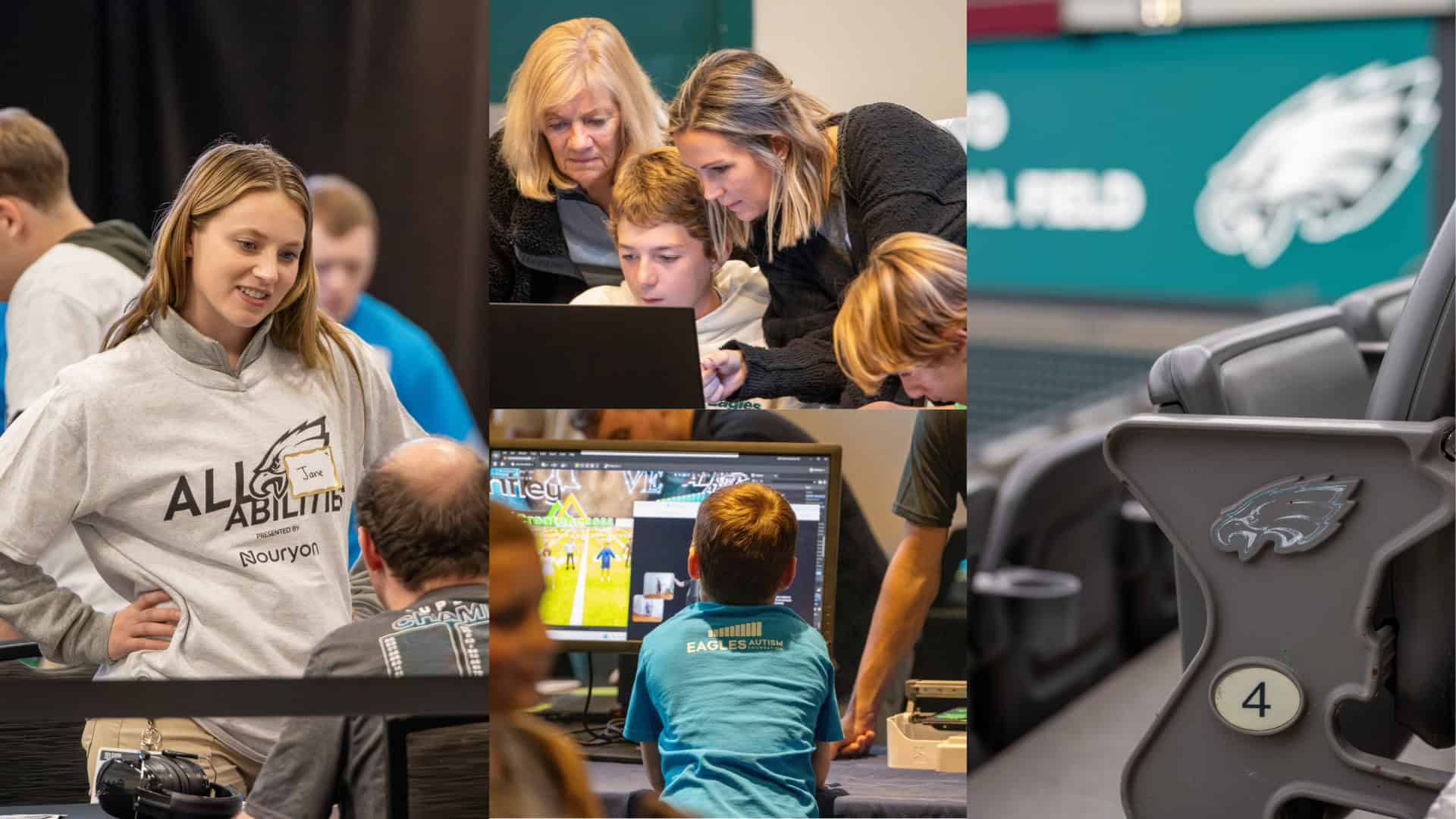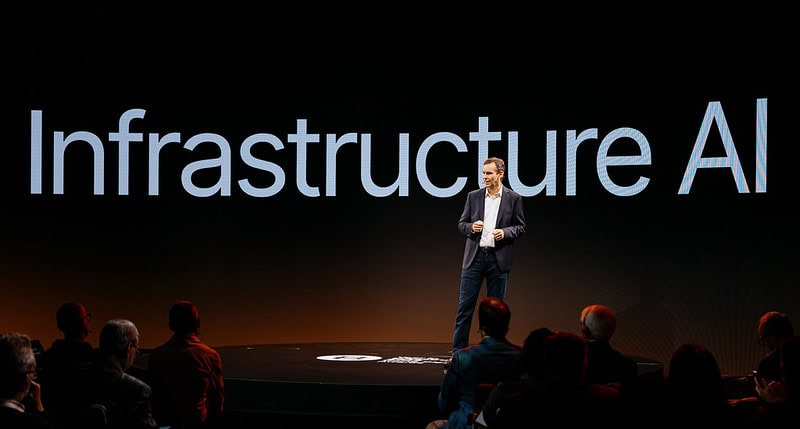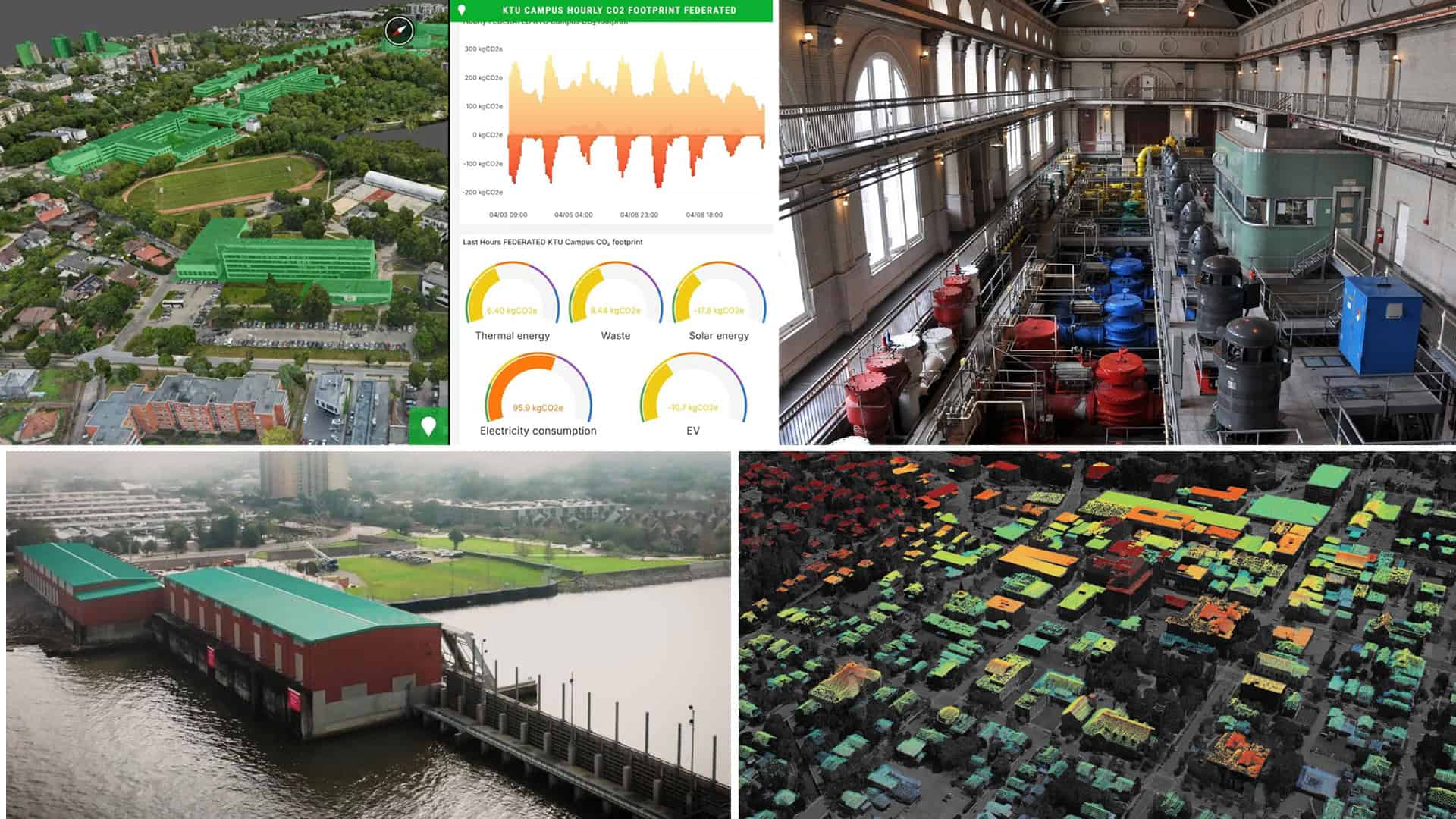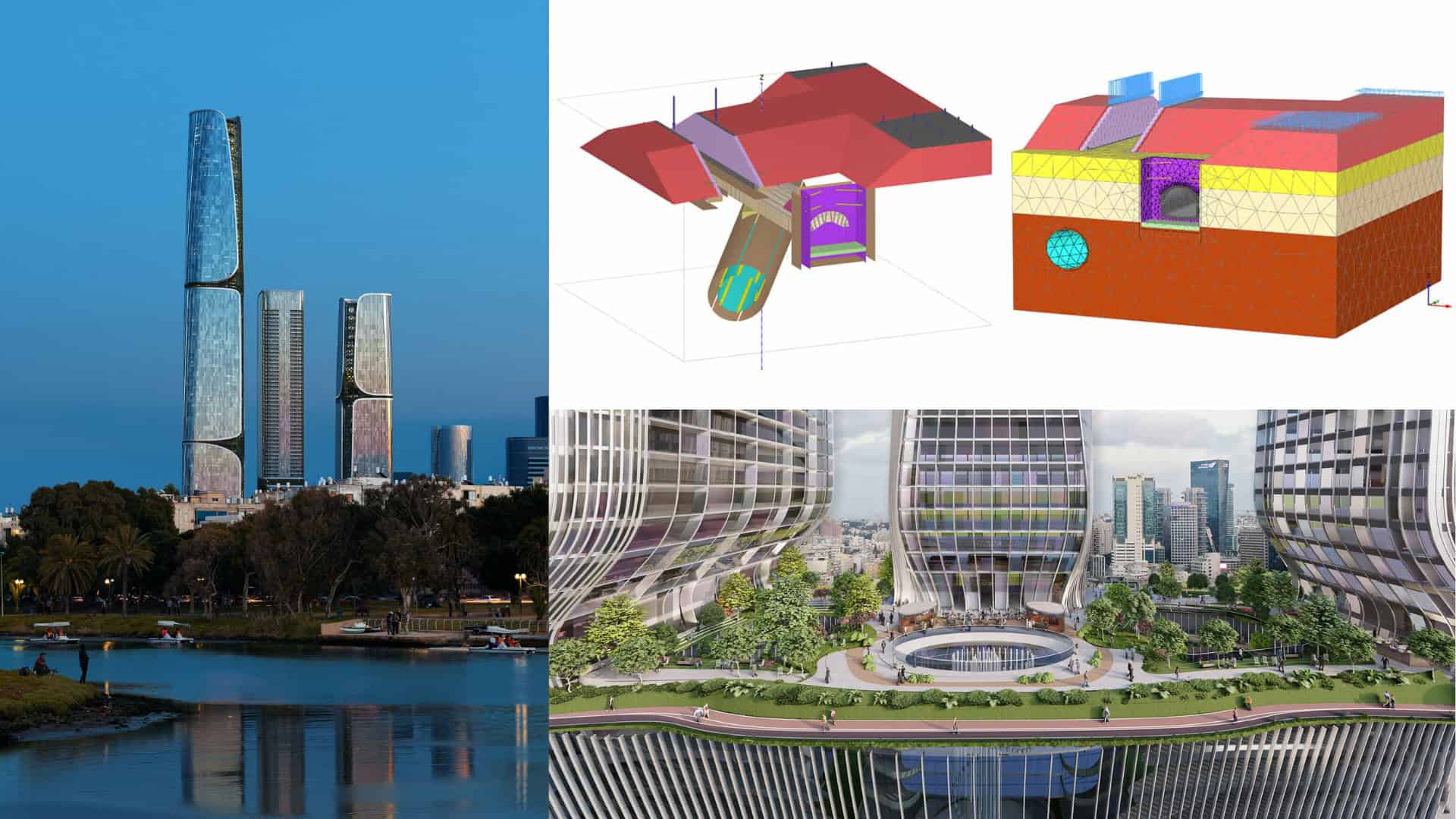If Joe Carr’s life were a Fighting Fantasy book—the well-thumbed Choose Your Own Adventure series that lines his bookshelves—it might begin like this: Before you lies a branching path. Every step a challenge, every choice a puzzle. Do you reason your way forward, code a solution, or invent a new way to play the game?
For Carr, a senior software developer at Bentley Systems, this isn’t just a metaphor—it’s how he thinks. From high school math competitions to elite coding challenges, problem-solving is his game, whether in puzzles, algorithms, or real-world infrastructure.
In Fighting Fantasy, success depends on three traits: skill, stamina, and luck. Carr’s journey—from cracking complex mathematical puzzles to designing solutions powered by artificial intelligence (AI)—has relied on all of them. The first two earned him a reputation as a formidable problem-solver, but a timely stroke of luck—a chance encounter with Bentley’s chief technology officer, Julien Moutte—gave him the chance to design and lead a company-wide coding and AI contest.
Breaking the 100% Barrier
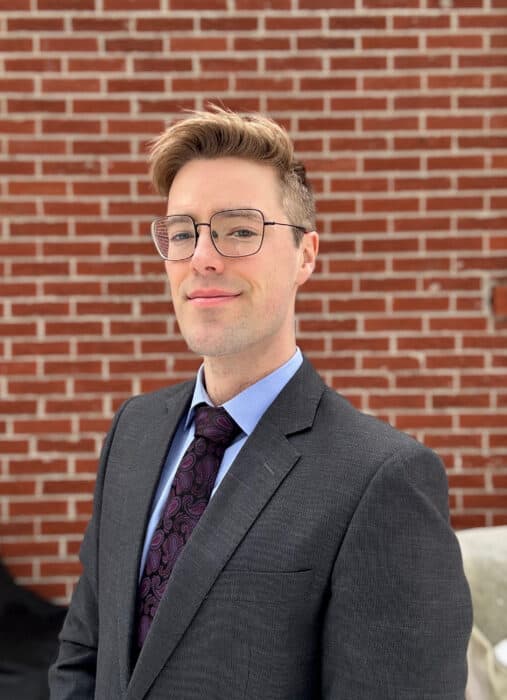 Joe Carr, Senior Software Developer for Mobility Simulation
Joe Carr, Senior Software Developer for Mobility SimulationScience and engineering were always in the cards for Carr. Born in Ottawa but raised in Mississauga, the Canadian city just west of Toronto, he grew up in a family where problem-solving was second nature. His parents are both scientists, and his sister became a doctor. But it was mathematics that truly clicked. By high school, he was winning competitions and officially tutoring his peers.
At McGill University in Montreal, where he studied mechanical engineering and computer science, perfect scores became the norm. In his programming and algorithms course, he scored 103%—solving every problem and the bonus questions.
Carr started his career at a New York consultancy firm in 2018 and went on to join a Montreal-based AI startup. But in a small team, he found himself wearing too many hats—and realized his real passion lay under the mathematical hood, solving systemic problems at the algorithmic level. In 2021, that realization led him to INRO, a Montreal-based company specializing in transportation simulation software. Two weeks after he joined, INRO was acquired by Bentley. Coincidence? Well, yes.
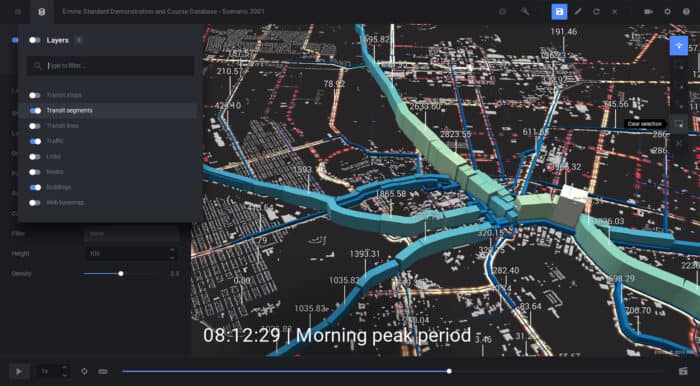 Joe Carr works on OpenPaths transport modeling software. Here, a sub-product called Scenes illustrates peak morning traffic, with colored segments representing traffic volume.
Joe Carr works on OpenPaths transport modeling software. Here, a sub-product called Scenes illustrates peak morning traffic, with colored segments representing traffic volume.At Bentley, Carr develops sophisticated simulation tools with Bentley’s OpenPaths team, helping cities anticipate how people move. “I describe it to friends as SimCity, but for professionals,” he says, referring to the city-building video game series. Carr works mostly on a product called AGENT. The software models urban populations using demographic data, creating digital “agents”—virtual people making daily choices about commuting, school drop-offs, and errands.
These agents navigate a high-fidelity transport network, allowing Bentley’s software to model traffic and pedestrian flows in response to changes—whether it’s road construction or a major event like the Super Bowl in the US. “Simulation programming is where my background in mechanical engineering and computer science really comes together,” Carr says. “Bentley gives me the perfect opportunity to put my math chops to work—digging into algorithms, optimizing systems, and solving real-world problems. That’s what makes it so enjoyable.”
Always looking for the next adventure
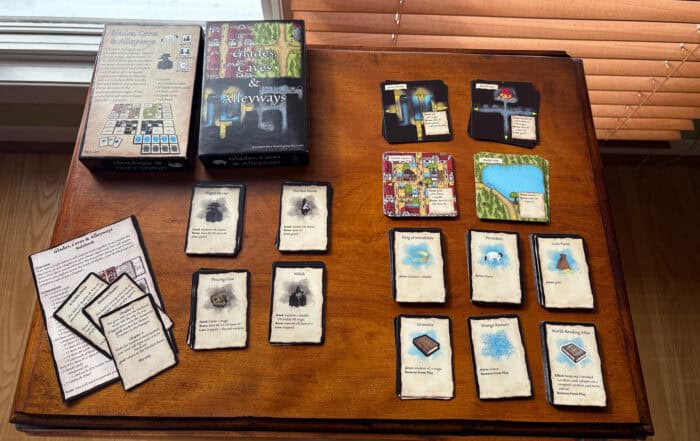 “Glades, Caves & Alleyways” game components on a table.
“Glades, Caves & Alleyways” game components on a table.Carr’s love of structured systems extends beyond work. A lifelong fan of branching-path adventures, he even designed his own game world: Glades, Caves & Alleyways, a cooperative role-playing board game that demanded meticulous planning, intricate mechanics, and hand-drawn artwork. “I’m not much of an artist, but I was proud of what I created,” he says. He once brought it to the office, where colleagues enjoyed it well enough that a Bentley code repository now bears the name GLADES.
The Puzzlemaster
For Carr, designing games and solving puzzles aren’t so different—both require strategy, creativity, and a deep understanding of systems. That mindset made him a natural contender in Bentley’s annual Coding Challenge, set by the Office of the Chief Technology Officer (OCTO) in December 2023. That year, Bentley’s developers joined the global Advent of Code competition, where hundreds of thousands of coding enthusiasts tackled a daily puzzle from December 1 to Christmas Day. The puzzles grow harder by the day, becoming a real test of skill, and success hinges on solving problems quickly and correctly.
Of the 104 developers competing from Bentley, Carr placed first by a notable margin. On the December 24 problem—arguably the toughest of them all—he ranked an extraordinary 35th in the world. “I tend to do better on the harder problems,” Carr says. “The early ones are about how fast you can read and type a solution. The later ones are more about how deeply you can think it through.”
His achievement didn’t go unnoticed by Bentley’s leaders, and soon came a moment of serendipity that would allow Carr to double down on his success. During a long-planned visit to the Montreal office in the summer of 2024, Carr learned that Bentley’s CTO, Julien Moutte, and other senior leaders were making an impromptu visit to their satellite office. “This was a big deal for us,” Carr says. What stood out wasn’t just the leadership team’s presence, but how they engaged. “They didn’t just stick together or talk to one person—they spread out to make sure everyone had a chance to speak and be heard. It was clear that listening is a real priority for them, and I found that very impressive.”
As they talked, Moutte posed a key question: How could Bentley inspire more developers to explore and adopt AI tools? Carr tested his luck, offering Moutte a new direction. “Advent of Code actively discourages people from using AI tools, so I suggested that Bentley run our own coding contest, where the point would be to cover AI topics and actually use AI tools to solve puzzles with practical relevance to infrastructure,” he says. Moutte was intrigued. Recognizing Carr’s knack for tackling complex problems, he decided to roll the dice and encouraged Carr to submit a proposal for an all-new 2024 OCTO Coding Challenge.
“I love organizing those challenges because they are useful in so many ways,” says Moutte. “It’s a great way to engage colleagues in a fun experience, a valuable insight in discovering our top talent, and also a unique opportunity to upskill colleagues on new technologies like AI code generation. This one went beyond my expectations because I also had the privilege of getting to know a brilliant colleague who did most of the heavy lifting and drove this experience to new heights!”
GitGoing
Carr’s vision for the challenge was different. Instead of rewarding speed, it would emphasize thoughtful solutions and elegant problem-solving. “It wouldn’t be about who could reach the right answer the fastest,” he explains. “We wanted to highlight how AI could be used effectively—not as a shortcut, but as a tool for deeper problem-solving.” The competition would run over four weeks, with a new two-part problem released each week, giving participants time to refine their approach.
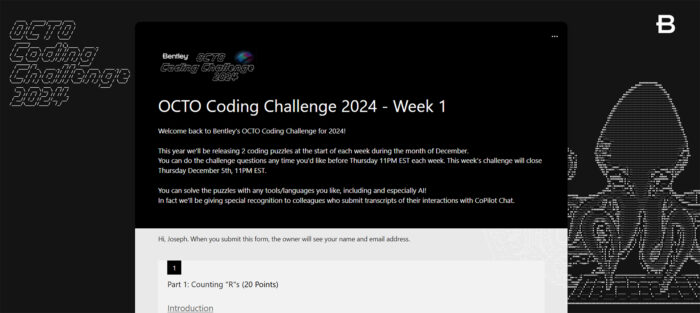 Screenshot of the OCTO Coding Challenge 2024 Week 1 webpage.
Screenshot of the OCTO Coding Challenge 2024 Week 1 webpage.With Moutte’s backing, Carr took the lead in designing a challenge that would encourage Bentley’s global developer community to engage with AI in new ways. “The first puzzle was about using AI correctly—understanding what it’s good at, what it struggles with, and how to work around its limitations,” he says.
As the challenge progressed, Carr’s puzzles became more demanding, with the third week’s problem delivering a curveball. “Traditional programming techniques didn’t work here, so participants had to think differently,” he says. “Some used Monte Carlo simulations—which I actually use in my OpenPaths work—while others turned to linear algebra or, even better, sparse fixed-point iteration methods, both classic techniques for stability analysis in infrastructure.”
The final challenge tackled network optimization and traffic flow, directly reflecting the real-world problems that Bentley software helps solve. Participants had to design efficient networks and maximize traffic throughput—tasks that urban planners and engineers regularly face. “These are the kinds of algorithms used in real infrastructure planning,” says Carr.
Success wasn’t just about getting the right answer—it was about how participants got there. Submissions were judged on three key criteria. The first was correctness, of course; each problem had a definitive solution. But elegance also mattered, so the second criterion centered on assessing code for clarity and efficiency. The third was AI collaboration. Participants were encouraged to use AI tools like GitHub Copilot and submit transcripts of their AI interactions. The goal wasn’t just automation but thoughtful integration, with AI serving as a partner in problem-solving rather than just a shortcut.
Embracing AI
The challenge exceeded expectations, drawing nearly 200 developers from around the world—twice as many as the previous year. The event wrapped up on a Friday, and Carr was expected to announce the winners on Monday. That left him a single weekend to assess over 500 submitted documents—even with good stamina, it was far too much for one person to review manually. So in true problem-solving fashion, he built an AI-powered solution.
Using GPT-4, Carr automated the initial scoring, designing prompts to evaluate code elegance, creativity, and AI collaboration. “I set it up to return a numerical score with a justification, so I could filter and rank the top submissions,” he explains. This AI-assisted triage dramatically cut the workload, but the final call remained his—Carr personally reviewed the best entries, ensuring accuracy and fairness, and ultimately handpicked the winners.
Carr’s post-challenge analysis confirmed the impact of the challenge on AI adoption at Bentley. “We saw an immediate spike in Copilot usage,” he says. “And even after the challenge ended, AI adoption remained higher than before.” He had done more than create an engaging challenge—he had nudged Bentley’s developer community toward a future where AI is a natural, integrated part of their work.
AI’s role in infrastructure technology is only just beginning, Carr believes. As machine learning and automation evolve, they won’t replace human expertise but enhance it, making complex challenges more approachable and solutions more efficient. “It’s something you hear a lot, but it’s true—the AI of today is the worst it’s ever going to be. It’s only going to get better,” he says.
That belief—every system can be improved, every challenge refined—drives Carr’s approach to problem-solving. For him, every challenge is a branching path, just like the gamebooks he still loves. Each problem presents a choice, each solution shapes what comes next. Whether he’s tackling a coding puzzle, optimizing traffic flow, or helping Bentley’s developers embrace AI, he’s always searching for the smartest, most efficient route forward. And in this adventure, he’s not just charting his own course—he’s helping shape the future of AI-powered infrastructure for everyone who follows.
